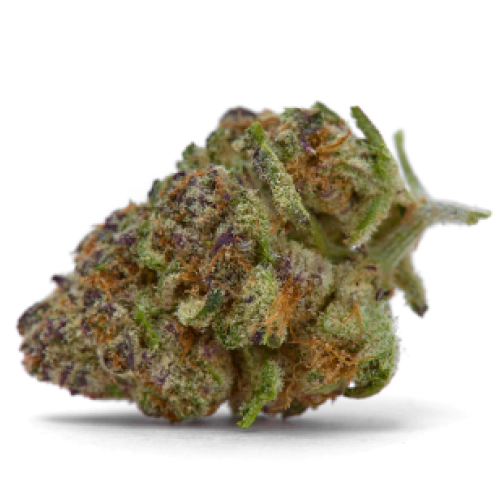The marijuana flowering stage is a stage in the cannabis herb’s life cycle, followed only by harvesting. Those are specific milestones that growers eagerly await. Upon doing everything correctly (observing the dosage of fertilizers, monitoring the temperature, humidity, intensity of lighting, and preventing the appearance of mold, fungi, and insects), you can count on going to the next stage of your «plant»’s life cycle — flowering — on its own.
How to Prepare for Growing Weed Flowering Stage
Proper care of flowering marijuana seeds affects not only the quantity but also the quality of future buds: the percentage of THC, taste, and aroma. Starting from the cannabis pre-flowering stage of active bush growth it is better to start periodically measuring the acidity of the soil and to check that the plants were healthy because ahead is the most important stage of their life cycle.
- For best results in a hydroponic growing environment, reduce humidity to 45% one week before flowering for a significant increase in resin production;
- Cut off weak lower branches in two to three days so that the plant will not waste energy supporting them;
- Adjust the temperature in the grow box to 77 degrees Fahrenheit for the day and 64.4 degrees Fahrenheit for the night.
- Feed the plant with root stimulants and additives designed to induce flowering. Don’t forget about calcium and magnesium – their added presence will serve to make your soil more fertile.
Cannabis Flowering Cycle: Indica and Sativa
Marijuana flowering is dependent on the genotype of a particular type — the features of marijuana flowers of different strains vary depending on the natural growing conditions of a plant. The cannabis plants can be divided into three categories by their flowering behavior, auto-flowering cannabis strains, photoperiod cannabis strains, and high-yielding cannabis strains.

Indica’s Flowering
Indica-dominant marijuana strains tend to be more photoperiodic — that is, they experience more change in response to alterations to their light cycles — than other types of cannabis. When the 12/12 mode is selected, the bushes bloom in tandem producing buds within one or two weeks. During the flowering of cannabis of this type (especially at its final stage), humidity should be reduced to an acceptable minimum (40-50%). Indica’s buds are dense and therefore prone to mold. For an Indica strain, flowering will last around 40 to 60 days.
Sativa’s Flowering
Sativa’s flowering is not so simple and straightforward. Sativas are typically found in equatorial and tropical environments, where changes in day length and temperature fluctuations are minimal. Therefore, Sativa is better adapted to high humidity. The plant’s loose inflorescences are resistant to mold and fungus when lightly blown.
Cannabis Flowering Cycle
At the beginning of flowering, the cannabis plant is in a transitional stage. It’s like puberty transition in teenagers. Some strains can almost double in height. Due to rapid growth, the early flowering stage is called the stretching phase. Essential things to know about the early stage:
- Once the plant enters the flowering phase of its life cycle, it requires more nutrients. However, Dutch breeders do not recommend significantly increasing the dosage of feed. At this stage, it is better to stick to the usual schedule of nutrients for at least another week after the start of the transition to cannabis bloom;
- In the stretching process, when cannabis is significantly increased in size, it is recommended to use the method of hemp bending — LST. This will help to get more effective crop varieties of cannabis.
First Couple of Weeks
In the second week of flowering, you’ll see white pistils growing on female hemp plants. These thin white hairs will develop in places where the large rolling leaves meet the main stem. It is they who will later become buds. The male hemp plant will not grow hairs. Instead, it will have small bags of pollen. In the 2nd week, growers increase the nutrient supply to help the plants reach their maximum yield potential.

Third Week
Cannabis plants have not completely stopped growing and will now be about 50 percent more than they were three weeks ago. The sprain of the bush continues, but soon it will begin to slow down gradually and will soon stop completely. Where a few hairs were previously seen, it is now easy to detect the first signs of the appearance of real bumps. Look closely: where you had previously noticed a few stray hairs, you will see actual buds. This is the flowering phase when the plant starts to expend most of its energy on producing flowers. During this phase, experienced growers recommend the following:
- Ensure sufficient nutrients and correct dosage;
- Check for potential defects (discoloration, yellowing, or total loss of leaves);
- Check cannabis for signs of possible overfeeding («nutrient burning»).
Fourth Week
The plants are likely to stop growing and spend their energy growing the inflorescences. There are still white hairs sticking out of them, but the buds themselves will get bigger and thicker every day. As the plants mature and produce more trichomes, their odor will become stronger and more noticeable.
Fifth Week
So, what does a flowering marijuana plant look like? Cones throughout the bush will become denser. You can also find fresh inflorescences that have begun to grow in new places. This is a sure sign that the marijuana flowering is in full swing. Some of the pistil hairs may now become darker, becoming brownish or amber. Trichomes also gradually cease to be transparent. They acquire a milky-white hue, while the hairs gradually darken. These are signs that the harvest will soon be ready for reaping. In this phase, the cannabis plant will emit a very strong and intense odor.

Top Recommended Seeds for Growing
Conclusion
The flowering of marijuana is the essential stage before harvesting. This period includes important milestones that require special attention and measures from a grower. Those measures are temperature checking, nurturing, and careful trimming weed plants while flowering.




